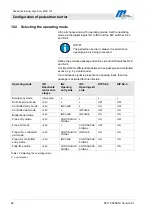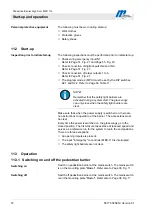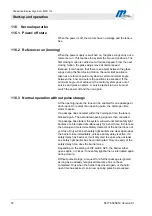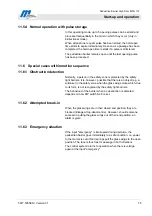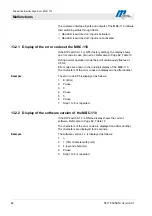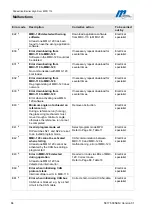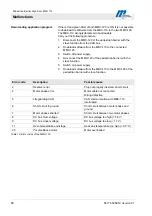
Pedestrian Barrier High Door MPH 112
Start-up and operation
74
5817,5005EN / Version 01
11.5 Normal operation
11.5.1 Power-off state
When the power is off, the motors have no voltage and the lane is
free.
11.5.2 Reference run (homing)
When the power supply is switched on, the glass wings carry out a
reference run. This teaches the system the two end positions. The
first closing motion is carried out at reduced speed. From the next
closing motion, the glass wings move at normal speed.
Because it can happen that there is an object between the glass
wings during the first closing motion, the outer limit position is
taken as a reference point only when a certain minimum angle
between the inner and outer stop positions is exceeded. If the
minimum angle is not achieved, the control system goes out of
service and gives an alarm. A service technician on site must
switch the power off and then on again.
11.5.3 Normal operation without pulse storage
At the opening inputs, the lane can be enabled for one passage at
each input. On receipt of an opening pulse, the hold-open time
starts to expire.
If a passage does not start within the hold-open time, the lane is
blocked again. The associated opening signal is then cancelled.
If a passage has started, the system will wait until both safety light
barriers are interrupted simultaneously for a short time. In this case
the hold-open time is immediately cleared, but the barrier does not
yet close. Only when both safety light barriers are clear again does
the barrier close immediately, unless a safety delay is active. If a
safety delay has been set, it will only start to expire when at least
one safety light barrier has been interrupted. Only on expiry of the
safety delay time, does the barrier close.
Depending on the setting of DIP switch S2.5, the barrier either
opens again, or closes if one safety light barrier is interrupted again
during closure.
Without pulse storage, a request for a further passage is ignored
as long as an already recognised clearance has not been
completed. Only when the barrier has closed again, or the hold-
open time has expired, can a new opening pulse be processed.





